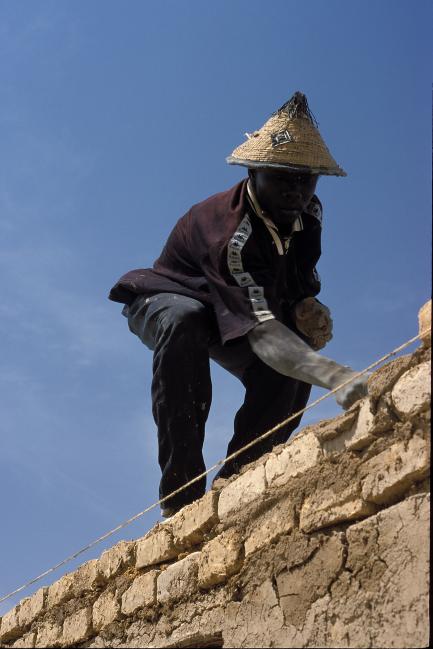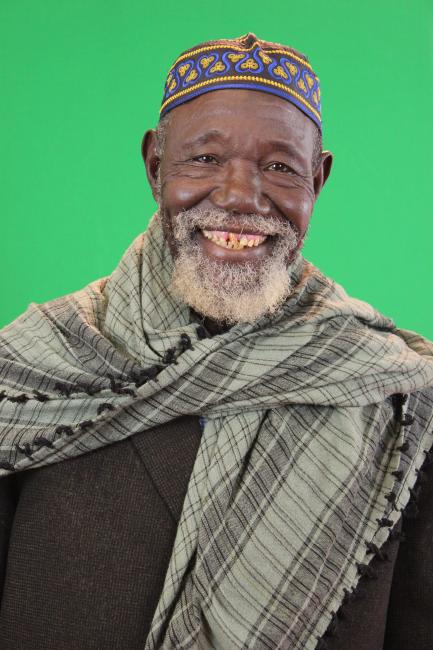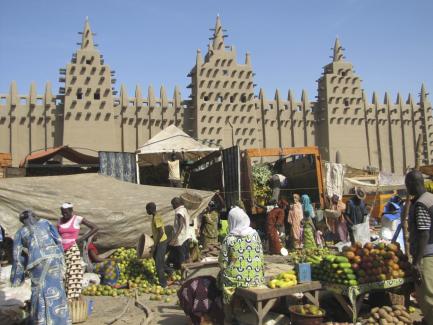The Smithsonian’s National Museum of Natural History opens “Mud Masons of Mali” Aug. 31, as part of the Smithsonian’s “Earth Matters” initiative. The temporary exhibition, featuring photographs, original films, objects and tools, tells the stories of one of Africa’s most celebrated ancient architectural traditions, and it highlights the different challenges masons face today to hold on to their craft in the 21st century. The exhibition will be on view for one year.
More than 50 photographs will guide visitors through the exhibition as they explore the city of Djenné (pronounced Jen-ay), a UNESCO World Heritage site since 1988, and learn about the technical skills the masons use to construct and maintain the historic buildings, including the Great Mosque. Originally built in 1907, the central mosque is one of the largest and most impressive mudbrick buildings in the world. A monitor will display four short films introducing five masons, their city and the pride they take in their work. The films also present the training and skills needed to build and maintain mud architecture, as well as contemporary political and environmental challenges mud masons encounter as they struggle to preserve their historic city in the face of modernization. Two cases of tools and building materials bring the realities of mud masonry further to life, and give museum visitors a window into the level of skill and labor behind the craft.
“Mud Masons of Mali”will be on display in the “African Voices Focus Gallery,” a temporary exhibition space inside the “African Voices” permanent exhibition. “Mud Masons of Mali” is co-curated by Mary Jo Arnoldi, curator of African ethnology and department chair of anthropology at the National Museum of Natural History, and Trevor Marchand, professor of anthropology at the University of London’s School of Oriental and African Studies.
“The original idea for ‘Mud Masons’ grew out of a number of visits to the city of Djenné during the course of my research in Mali over three decades,” said Arnoldi. “Many exhibitions and books have featured the mud mason architecture, but it was our intentions to give a voice to the masons themselves. Making the films has been a special delight involving working with five talented and generous Djenné masons: Konbaba Tennepo, Boubacar Kouroumansé, Lassina Kouroumansé, Salif Droufo and Almamy Kouroumansé. Ranging in age from 77 to 21, each of them brings a different set of experiences to this story.”
The masons responsible for Djenné’s unique architecture are members of the Boso ethnic group, a centuries-old craft guild that fosters and oversees the art of mud construction. Techniques and traditions are handed down between generations of masons as young laborers strive to become apprentices and, eventually, after years of perfecting their art, master masons. Masons frequently patch and resurface older structures following the annual rains which erode surfaces of the mud buildings. Each year during a special festival, the mud masons of Mali re-plaster the Great Mosque and celebrate their tradition of craftsmanship. In addition to honoring this legacy, many Malians are beginning to look toward the future when building their homes. Mud masons are striving to maintain their traditional buildings styles while meeting an increasing demand for bigger buildings with more conveniences, such as indoor plumbing, paint and ceramic tiles to reduce upkeep.
“Mud Masons of Mali” stemmed from the National Museum of African Art’s “Earth Matters: Land as Material and Metaphor in the Arts of Africa” exhibition, which opened in April 2013. The exhibition was curated by Karen Milbourne and examines the conceptually complex and visually rich relationship between African artists and the land upon which they live, walk and frame their days through approximately 100 artworks.
To learn more about the lives of Mali’s mud masons, visit mnh.si.edu/exhibits/mud-masons. The website will be available prior to the public opening of the exhibition Aug. 30.
# # #
SI-347A-2013






